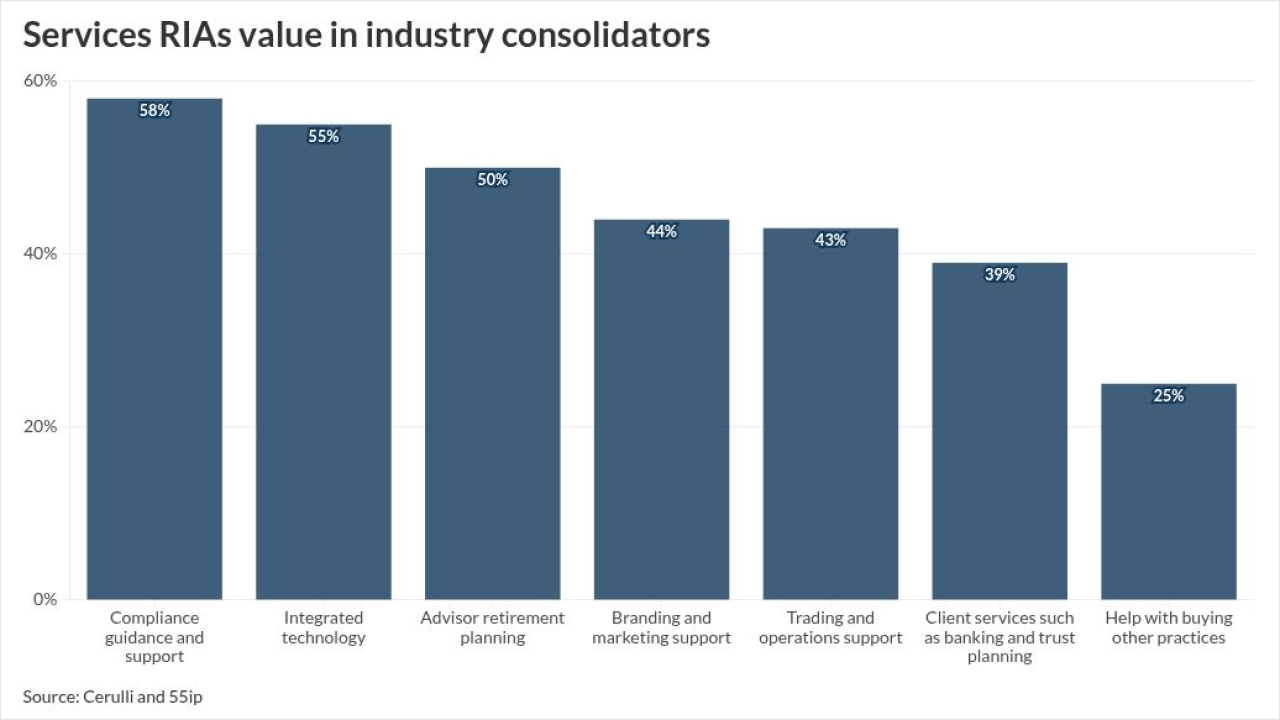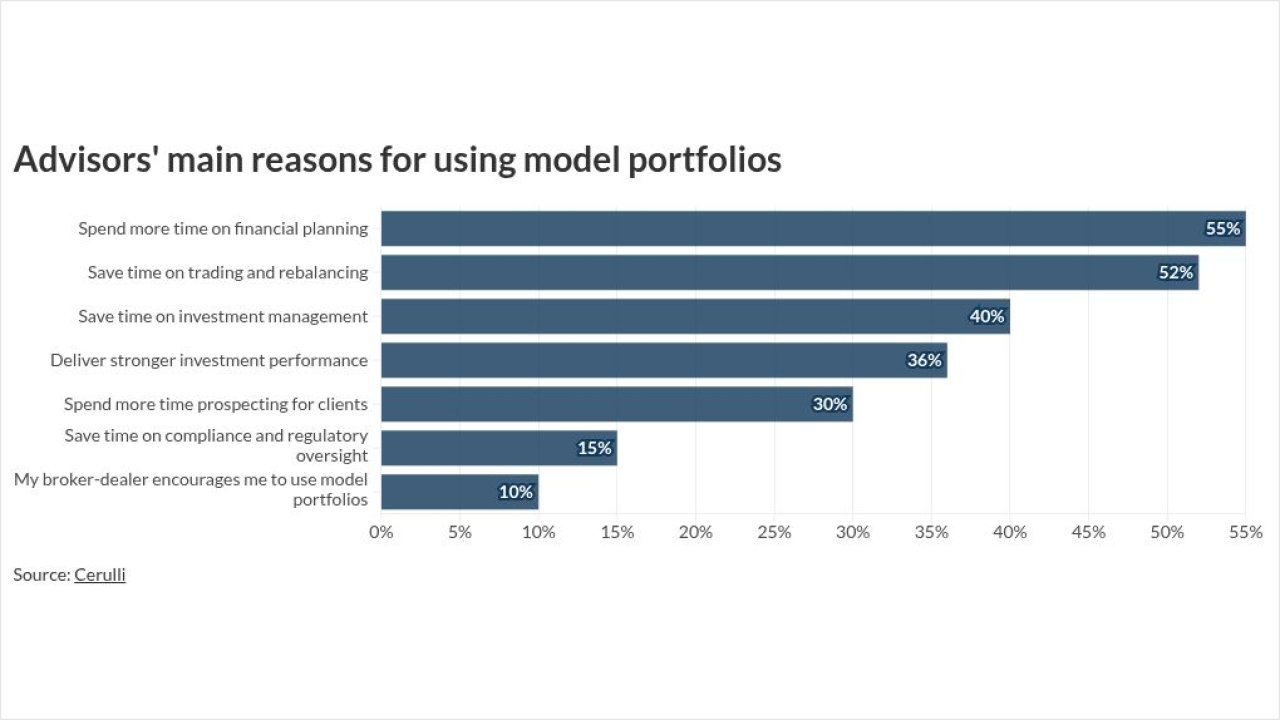Over the last several years, the pursuit of yield has driven both advisors and investors toward newer, more complex ETFs and closed-end funds products that use leverage, employ derivatives, deal in options and futures, sell short and so on.
When such funds are held in clients IRAs which are governed by more stringent rules they can generate additional problems for advisors, creating tax headaches and raising questions about investor suitability.
IRA investing generally should tilt toward prudence, argues Bob Graham, who heads Great Lakes and Atlantic Wealth Management, an RIA in Chicago. Thats especially true if clients are elderly, when losses will be hard to replace, he says. In addition, if a client invests IRA money in a risky fund that loses value, theres no tax break when selling at a loss.
For most investors, the core holding of their portfolio should be a low-cost, simple investment, says David Blanchett, head of retirement research at Morningstar Investment Management. Yet demand has grown for exotic investments, Blanchett says, largely because some people are afraid to invest in equities and bond yields are still very low.
I think these types of funds can be appropriate for some investors, he says, but, even for those clients, such funds probably shouldnt be a significant percentage of the overall account.
Providing investment advice is always a proceed with caution activity; that may be especially true when recommending more complex funds for clients retirement accounts.
LEERY OF LEVERAGE
One potentially confusing area: funds (or other investments) that make use of leverage strategies.
The IRS tells taxpayers that loans are not permitted from IRAs or from IRA-based plans such as SEPs, SAR-SEPs and Simple IRAs. Indeed, any direct or indirect lending of money or other extension of credit between an IRA and its owner is prohibited.
Borrowing from an IRA is prohibited under Internal Revenue Code Section 4975, says Natalie Choate, a lawyer with the Boston law firm Nutter McClennen & Fish. However, borrowing inside an IRA is not the same as borrowing from the IRA.
That would make a margin account acceptable inside an IRA as long as the IRA owner doesnt personally guarantee the loan thus allowing funds that engage in various forms of leverage to be held in an IRA.
But it doesnt insulate the client from other tax-related consequences. These funds possibly can create unrelated business taxable income, says Choate, author of Life and Death Planning for Retirement Benefits. That income, known as UBTI, can lead to tax filings and (if it tops $1,000 in a year) tax payments; nothing in the tax code gives an IRA owner a basis step-up or tax credit for income already taxed thusly.
A related problem concerns IRAs that invest in master limited partnerships, Choate says. Investing in MLPs is a favorite way to generate income these days, but the result is that the IRA has partnership/business income, which is considered UBTI. In such cases, the IRA provider has to file an income tax return of some kind in connection with holding the MLP in the IRA that can create lots of paperwork. I sold the MLPs I was holding in my IRA when I became aware of this problem.
Highly leveraged investments can also complicate a retirement accounts risk profile in other ways, raising suitability questions. Any type of leverage adds to risk, Blanchett says. More leverage doesnt mean higher returns in fact it can mean the opposite.
He points to a Morningstar article on leveraged and inverse ETFs, some of which can scorch your portfolio in just a few days. One example: a fund that moves up or down twice as much as a given index, compounded daily. If a 10% up move is followed by a 10% down move, day after day, a fund using this type of leverage would end up with a loss of more than 18% after 20 days. After six months of this pattern, a $100 investment would be worth just $2.54.
HEDGE-STYLE STRATEGIES
Double (or triple) leverage funds may not be common for many financial planning clients, but some hedge-type funds have grown in popularity. Liquid alternatives, for instance, have been all the rage, Blanchett says.
But hot product trends dont always end well. From what Ive seen, clients do not understand the degree of risk in some of these funds, says Peter Rageas, a lawyer in Detroit who specializes in representing victims of stockbroker and investment fraud. They often presume that an IRA investment is being looked at more conservatively than a fund held in a regular account. They dont realize these funds may not be that secure.
Advisor due diligence, along with effective client communication, can be key to deciding whether to recommend such funds. Indeed, Blanchett says he is more comfortable when advisors recommend exotic funds, assuming they have done their research, than when average retail investors purchase them.
One critical factor is matching riskier funds with the right clients. With an unsophisticated risk-averse investor, these are unsuitable, Choate says, but for the knowledgeable risk-loving investor, they can be fine. ... My most sophisticated clients buy the same types of investments in their IRAs as outside.
John Nersesian, managing director of wealth management services at Nuveen, argues that for educated clients, certain funds might be better inside an IRA. Closed-end funds often pay short-term capital gains or other income taxed at ordinary rates, he says. For someone in a high marginal bracket, the savings can be substantial.
Even if such funds seem suitable for clients, advisors should ensure that potential investors realize what theyll be holding. Presenting a range of possible scenarios is always a good way to test practical understanding of conceptual topics, Nersesian says. Present losses or gains as numbers rather than percentages its easier to agree to the possibility of losing 20% of a $1 million portfolio than it is to losing $200,000.
Explain each investments purpose, he adds. Many of these funds serve a purpose beyond return such as generating income, protecting against inflation or reducing portfolio volatility. Advisors should explain why they have chosen a particular fund, because its usually not for high return potential.
DOCUMENT DECISIONS
Planners may also want to keep records of how they came to recommend leveraged and nontraditional funds for clients IRAs.
Ronald E. Heakins, president of OakTree Investment Advisors in Pittsburgh, says advisors often have no clue what is in the exotic products they are putting in clients IRAs. Leverage not only increases risks, it also can result in higher fees, he says.
Heakins, who has served as an arbitrator and expert witness in securities cases, says tht clients claiming to hold unsuitable leveraged funds in their IRAs do not necessarily win judgments. Nevertheless, he suggests, planners should be ready to support their recommendations, if challenged.
The more thought that goes into the reasons for recommending unconventional funds in a clients IRA, the greater the chance that such a fund will be in the right place for the right reasons.
Donald Jay Korn is a Financial Planning contributing writer in New York. He also writes regularly for On Wall Street.
Read more:





